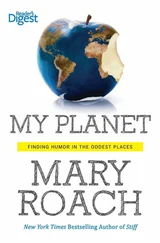MISSION CONTROL: Gemini VII, this is Surgeon. Frank, do you have any lotion remaining?
BORMAN: Any lotion?
MISSION CONTROL: Roger.
BORMAN: We have some but we sure don’t need it, Jack. We are as greasy as can be.
It is unusual to come across the word lotion in a NASA mission transcript. Borman seemed nettled by NASA’s preoccupation with skin care, as though it were compromising the overall manliness of the mission. At one point, the flight surgeon comes on the microphone to ask, “And how are your skins?” Earlier, he’d accosted Borman out of the blue with the inquiry, “Are you having any difficulty with drying of your lips?” “Say again please?” answers Borman. You get the sense he heard him fine. On the fourth day, Mission Control fixated on how much Borman was perspiring. Borman, like his epidermis, had reached the saturation point. He refused to answer, forcing Mission Control to try to enlist Lovell’s help.
MISSION CONTROL: Do you notice in looking at him that his skin is moist?
LOVELL: I’ll let him answer that.
BORMAN: [silence]
MISSION CONTROL: Have you been sweating at all, Frank?
BORMAN: [silence]
MISSION CONTROL: Gemini VII, this is Carnarvon. Did you copy?
BORMAN: About sweating? I’d say, yes, I’m perspiring a little.
MISSION CONTROL: Very well. Thank you.
Once a set of clothes becomes saturated and oil starts to build up on the skin, what’s the end point? Does uncleansed skin grow ever greasier as the days pass? It does not. According to the Soviet research, the skin halts its production of sebum [65] Roughly 4.2 milliliters per day, according to a table in a paper by Mattoni and Sullivan, entitled “Synopsis of Weight and Volume of Waste Product Generation from All Sources in the Closed Environment of a High Performance Manned Space Vehicle.” That is just under a teaspoon of skin oil, an equivalency made with the help of a recipe conversion table. Employed in tandem, the two tables would enable the deranged or geographically isolated baker to substitute sebum for vegetable shortening or calculate the equivalent of a cup of flour in desquamated epithelium.
after five to seven days of not bathing and not changing one’s increasingly well-greased clothing. Only when the person changes his shirt or takes a shower do the sebaceous glands get back to work. Skin seems happiest with a five-day buildup of oils. Listen to Professor Elaine Larson, editor of the American Journal of Infection Control , talking about the stratum corneum, the outermost layer of human skin: “This horny layer has been compared to a wall of bricks (corneocytes) and mortar (lipids)” and helps “maintain the hydration, pliability, and barrier effectiveness of the skin.”
Do we compromise our skin’s health by constantly scrubbing off the mortar? Does our skin want us to bathe every five days? Hard to say. It’s true that especially zealous hand washers—hospital personnel and certain obsessive-compulsives—often develop irritation and eczema. Twenty-five percent of the nurses in one study, writes Larson, had dry, damaged skin. Ironically, the nurses may be exacerbating the very thing that hand-washing seeks to prevent: the spread of infectious bacteria. Larson says healthy skin sheds 10 million particles a day, and 10 percent of those harbor bacteria. Dry, damaged skin flakes off more readily than healthy, lubricated skin and thus disperses more bacteria. Damaged skin also harbors more pathogens than healthy skin. As Larson says, “Perhaps sometimes clean is too clean.” Most Americans don’t wash often enough to cause skin problems, but they certainly wash more than necessary. In the words of some academic I can’t name because I’ve lost the first page of his paper, “Personal hygiene as practiced in the U.S. today is largely a cultural fetish, actively promoted by those with commercial interests.”
In space, as in the military, bathing is more an issue of morale than of health. Space agencies, recognizing what one researcher called “the psychological inadequacy of sponge baths,” devoted a lot of time and money in the 1960s trying to develop a zero-gravity shower for space stations. One of the earliest prototypes tested was a “shower suit.” The technical report I read included the following less-than-encouraging summary: “Results leave much to be desired in the showering, rinse, and drying procedures.” The usual arrangement doesn’t work; the water sprays from the shower head for a few inches and then collects in an expanding blob: fascinating, but of little ablutionary help. If you hold the shower head close enough to forestall the big blob, then the water ricochets off your skin, forming floating drops that you then have to spend ten minutes chasing down to keep them from floating out into the station. “It turned out to be easier just to forget the whole thing,” said astronaut Alan Bean, of the collapsible Skylab shower.
The shower on the Soviet space station Salyut used air flow to try to draw the water down toward the cosmonauts’ feet. It was minimally successful. Blobs formed, and blobs tend to cling to the body’s concavities, including the mouth and nostrils. To keep from choking, cosmonaut Valentin Lebedev and his crewmate Tolia Berezovoy wore snorkeling gear. “What an exotic sight it was,” wrote Lebedev in his diary. “A naked man [flying] across the station,…with snorkel in his mouth, goggles over his eyes, a clip on his nose.” Understandably, the crew of Salyut 7, like Elizabeth I, showered just once a month. These days there are no space showers. Astronauts wipe themselves with moistened towels and rinseless shampoo.
Bathing is more important on the space stations, because the missions are longer and they include daily exercise regimens that ratchet up the sweat level. As an adjunct to body wiping, Japanese astronauts on the ISS have been wearing “J-Wear,” developed at Women’s University in Tokyo out of fabric “with the function of dissolving foulness and body odor by photocatalyst and prevention of the rotten smell of sweat by the antibacterial nano-matrix finishing technique.” Astronaut Wakata Koichi (pronounced, perhaps aptly, co-itchy ) wore the same J-Wear underpants for twenty-eight days without complaint.
The astronauts of Gemini VII could only dream of “comfortable everyday clothes for life in a spaceship,” as one press release calls J-Wear. They wore hot, heavy, bulky spacesuits for pajamas. The subjects in the Air Force Gemini VII simulation were plagued by “chafing and much irritation in groin.” In case you have ever questioned the value of thorough wiping and regular changes of underwear, here’s a reason. In people with poor bathroom habits or 1960s Air Force hygiene restrictions, fecal bacteria migrate. Wright-Patterson researchers sampled thirteen sites on the men’s bodies to check for E. coli. It was a remarkable Diaspora. Fecal bacteria had made its way to the men’s eyes, ears, and, in two cases, toes. Five out of six of the Soviet subjects who sat in armchairs for thirty days developed folliculitis—bacterial infection in the hair follicles on the skin. Three developed boils—especially bad, swollen, painful, infected follicles. (The Soviet paper uses the old-timey term “furuncle.” You almost want one just to be able to go around saying “furuncle.”)
Lovell doesn’t recall any skin problems. “The difference is zero G,” he told me. “That’s the key to the whole deal.” When a man floats a few inches above his chair, when his arms hover out away from his sides, he has less of the chafing and irritation normally caused by damp, filthy clothes rubbing sweaty, unwashed skin. The astronauts’ underwear didn’t get plastered to their buttocks. Whatever bacteria lurked in their sweat, it wasn’t getting ground into their follicles. There is a condition called hot-tub folliculitis, which often appears on hot tubbers’ buttocks and the backs of their thighs—just where the friction and pressure is. (The water in a hot tub is hot, but not hot enough to kill bacteria. An undertreated hot tub is essentially, quoting University of Arizona microbiologist Chuck Gerba, “ E. coli soup.”)
Читать дальше












